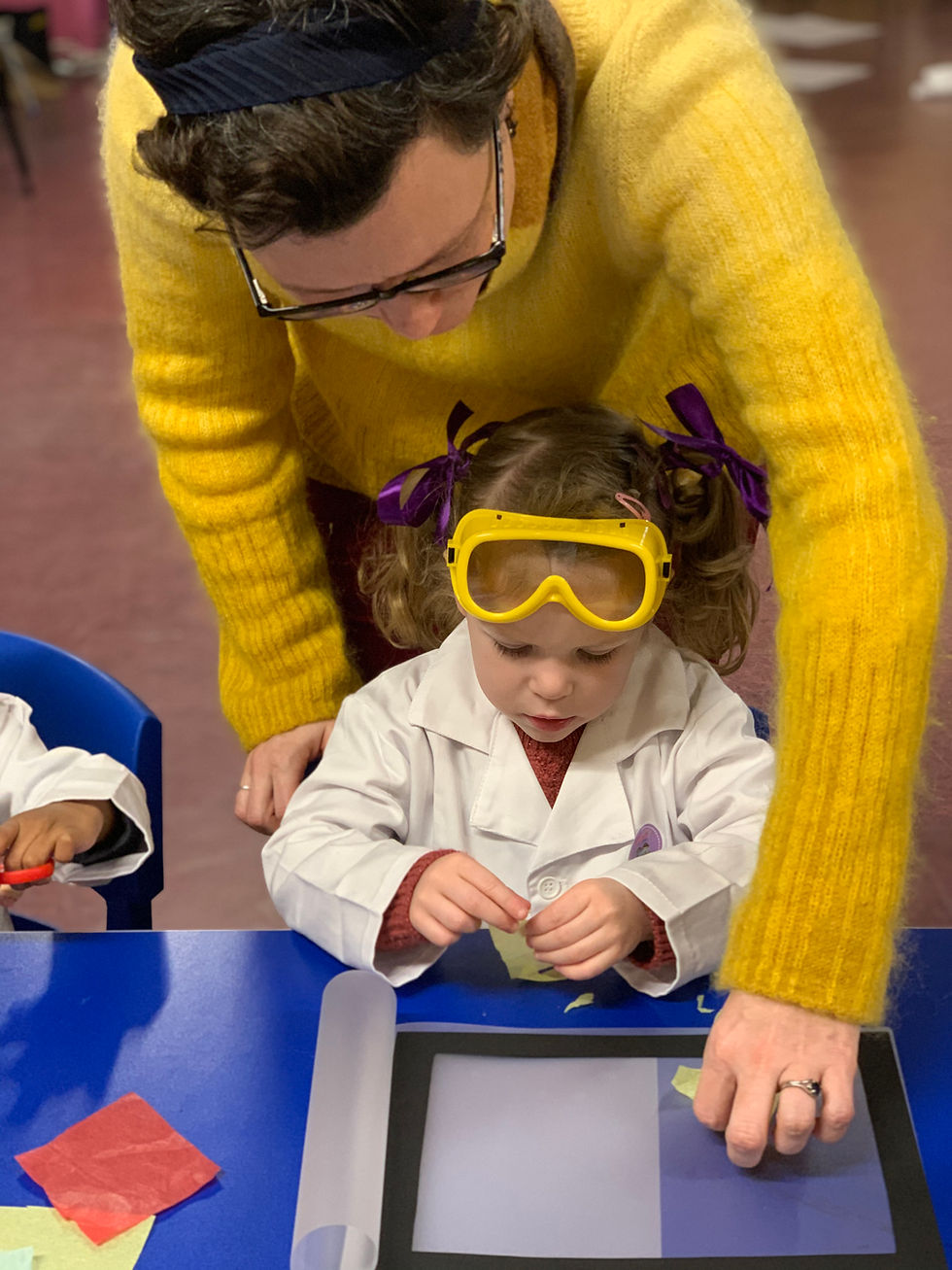STEAM in the Early Years
- Laura
- Feb 22, 2020
- 2 min read
Updated: Jan 12, 2023
What is STEAM?

STEAM stands for Science, Technology, Engineering, the Arts, and Maths. You may know the acronym STEM better, but the arts are often added to acknowledge the role of creativity and design in STEM fields. It is also meant to pull in children for whom STEM may not directly appeal and works particularly well in the early years to make these disciplines more tangible.
Why is STEAM so important in the Early Years?
Young minds are information sponges. While toddlers, preschoolers and beyond are too young to comprehend complex equations or sit down with a science textbook, they can still develop a love of learning about the STEAM subjects through play.
STEAM in the early years focuses on self-directed play and exploration rather than directed teaching of concepts. Think about scientists conducting experiments - these are the kinds of curious and inquisitive minds to encourage in children.
STEAM learning is becoming increasingly common in the years before formal school education begins. It’s the best way to prepare young children for the educational journeys that await them, while retaining the need for fun and excitement so important at this age. Children that undergo this type of learning in their infancy are shown to have a better chance of transitioning into school life with ease, with this comfort and confidence translating to better performances too.
So, how can you get involved in STEAM at home?
1. Provide the right resources

Many of the best STEAM experiences come when children are playing outdoors with natural materials, like in a mud kitchen.
You can also create your own STEAM environments indoors by providing a selection of resources to play and experiment with. When they’re in the bath for example, provide a range of tubes, funnels and containers to investigate pouring, measuring and comparing quantities.
2. Engage in play beside them

While it’s important to allow your child to lead their own investigations, having you alongside them to make observations using the appropriate language is very important.
Notice what your child is doing and then provide language to explain what they see. For example “Oooh look the water comes out of the bigger funnel more quickly!”
Appearing interested in what they’re investigating (even if you’re not!) will foster their own enthusiasm.
3. Encourage curiosity

This is another part of playing alongside your child. I can spot a teacher a mile off when they’re talking to their children as they’ll be asking questions and encouraging their child to come up with answers themselves.
Try saying “I wonder what will happen if….” or asking “What do you think will happen when…?” If they’re not initially interested, just go about finding out yourself and show them that when you wonder about something, you then investigate to find out the answer.
3. Join us online

At Little STEAMers, we run online classes for 2-5 year olds to introduce new concepts in age appropriate ways and provide ideas for follow up play and exploration.
You can try three of our top classes for just £1 including engineering bridges and playing with potion recipes.
We hope you’ll join us to play, explore and learn together soon!

Comments